
Lam Kinh Festival aims to commemorate, honor and show gratitude to National Hero Le Loi, Le Kings, generals and people who contributed to the history of building and defending the country.
The Upstream - The Epic Prologue
Following the Ma River upstream, through the rapids of Ba Thuoc and Quan Hoa, we seem to have returned to the 15th century - the time when the Lam Son uprising was full of enthusiasm. The mountains and rivers here not only created a beautiful landscape, but also turned into a natural fortress to protect the insurgents. One of the battles that left many marks for the Lam Son insurgents was in the year of Ky Hoi (1419), Le Loi led the insurgents up to Muong Thoi (Northwest Thanh Hoa , bordering Laos), choosing the mountainous area along the Ma River as a base. That land, that forest, that river had provided many meals of rice with forest salt, and had nurtured the spirit of "Binh Ngo". Here, the insurgents were helped by the people of the Ai Lao (Lao) tribes with food, weapons, elephants, and horses, so the insurgents' forces grew stronger and stronger. From Muong Thoi, the insurgents followed the Ma River basin many times to operate in the Loi Giang area (including the districts of Ba Thuoc, Cam Thuy and a part of the southeast of the old Quan Hoa district). The Lam Son insurgents' scattered and widespread activities made it impossible for the Ming army in Tay Do and Thanh Hoa to suppress them.
From the beginning of the year Canh Ty (1420), the Ming Dynasty had to mobilize more troops from Yunnan, Sichuan (China) and sent General Tran Tri to help Ly Ban suppress the uprisings of our army. After suppressing the uprisings in the North, in October of the year Canh Ty (1420), General Ly Ban mobilized more than 100,000 troops, launching a major attack on the Lam Son insurgent base in Muong Thoi. The enemy army, a part from Tay Do citadel, advanced, a part led by Cam Lan native troops from Quy Chau ( Nghe An ) along the mountain road. The Lam Son insurgents set up ambushes on the enemy's advance route, consecutively winning 3 major battles at Ben Bong (upstream of Chu River), Bo Mong (left bank of Ma River, on the road from Cam Thuy to Quan Hoa and Thi Lang, or Bo Thi Lang (near Muong Thoi base), thereby breaking their major attack...
Next was the battle at Ung Ai (ie Ong Pass, now Thiet Ong Commune) in Tan Suu year (1421) which was one of the resounding victories, defeating the powerful Ming army, affirming the position and strength of the Lam Son insurgents. Making the influence of the uprising spread more and more widely and strongly inciting the movement for independence of our people, opening a turning point to help the insurgents escape from the passive position, advance to the plains, take the initiative to the South, to the North, and then end with a great victory in 1428...
Not only during the Lam Son uprising, the upper Ma River region also witnessed the Can Vuong movement at the end of the 19th century. The scholars, patriots, and people of the Muong, Thai, and Dao ethnic groups here rose up together to fight against the French. The Ma River in the areas of Co Lung, La Han (Ba Thuoc)... once again witnessed the resilience of the Thanh Hoa army and people. The enemy posts that once guarded both sides of the river were surrounded and attacked by us, leaving behind many glorious victories. Now they have become historical relics of the resistance war.
Through many resistance wars, the Western Thanh Hoa region has always been identified as having a particularly important military strategic position, being the gateway to neighboring Laos, connecting with Nghe An, Hoa Binh , Son La provinces to form a western corridor. Therefore, the French colonialists wanted to invade and threaten the midland plains of Thanh Hoa. In particular, Co Lung is a place with a convenient traffic hub, guarding important roads, from here it is easy to go up to Van Mai - Suoi Rut, to the Northwest, to Hoa Binh, or to Hoi Xuan to enter Nghe An, to Sam Neua (Laos), or down to the plains.
In July 1947, the French colonialists and the "Lao traitors" left their posts and marched to Ban Cong (Ba Thuoc), intending to join forces with La Han post. However, the enemy was suddenly ambushed by a guerrilla team of ours. The enemy panicked and fled along the Mo Bi road to Hoi Xuan, not daring to go to La Han. This was the first victory of the Co Lung people against the French colonialists, reminding them not to underestimate this land. The second time, on the night of December 13, 1949, our army ambushed and killed 2 French officers and 1 European-African soldier in charge of the radio, forcing the enemy to surrender and hand over 90 rifles and 1 mortar to the Ba Thuoc district Administrative Resistance Committee. On December 17, 1949, our army continued to attack the French posts and camps, in which Co Lung post was completely liberated...
This was a fierce battle, full of sacrifices and hardships, lasting 16 months in many forms. The victory at Co Lung Fort broke an important link in the enemy's defense system, creating conditions for our army and people to expand the campaign to the Hoa Binh, Northwest, and Upper Laos regions...
Ham Rong - a 20th century epic
If the upper Ma River was the prelude of the Lam Son insurgents; the battle of Co Lung Fort dampened the fighting spirit of the French army, then Ham Rong - Nam Ngan was the pinnacle of the 20th century epic. On April 3 and 4, 1965, the sky of Thanh Hoa resounded with the sound of jet engines. 174 groups of American planes, with 454 sorties, swooped down on Ham Rong, dropping bombs and firing rockets, hoping to break the vital bridge over the Ma River. But in response, from the artillery positions on the banks, the Thanh Hoa army and people fought back steadfastly. Fire and bullets poured down, the earth and sky shook, but Ham Rong bridge still stood tall and proud. 47 American planes were shot down, many pilots were captured alive. The American press bitterly called it "the two darkest days of the US Air Force". As for the people of Thanh Hoa, those were two days of blood, bones and faith combined to create an immortal heroic epic. The mother saw her son off to battle at the river wharf, saying: "If you fall, the Ma River will embrace you like a mother's heart." That saying has long become a symbol of sacrifice and sacred maternal love during the war. Not only Ham Rong, but the entire Ma River area from Nam Ngan, Yen Vuc, Dong Son to Pha Ghep... all turned into "bomb bags". Thanh Hoa people dug trenches, built huts, and placed artillery right next to the river's edge. There were young volunteers who fell while carrying ammunition across the wharf, and there were young messengers who quietly delivered letters through the trenches. Their blood, along with bombs and bullets, mixed with the river, so that today the Ma River is not only heavy with silt, but also heavy with blood. Living witnesses - veterans of Ham Rong and Nam Ngan - recounted: In the midst of the storm of bullets and fire, people fell, others stood up, the line of people going to battle continued one after another like the river itself that never dried up. Veteran Le Xuan Giang, former Political Commissar of Company 4, Regiment 228, called it a symbol of “blood, bones, and faith” - a legendary battle. All of these combined to create an immortal epic. Blood, sweat, tears, and faith merged into that flow, so that the Ma River not only nourishes the land, but also nourishes the nation’s soul.

Ham Rong Bridge - the legendary bridge that made the historic victory of Thanh Hoa army and people.
The feats of arms along the Ma River not only contributed to the overall victory of the nation, but also became the flame that nurtured the faith and will of the people of Thanh Hoa. Comrade Dinh Tien Phong, former Deputy Secretary of the Provincial Party Committee, Chairman of the Provincial Veterans Association, affirmed: The victory of Ham Rong - Nam Ngan is a shining testament to the strength of the People's War, dealing a heavy blow to the destructive war strategy of the US imperialists. In today's innovation and integration, the lesson of indomitable will and solidarity from the Ma River is still the driving force urging the entire Party, people and army of Thanh Hoa to move forward firmly, continuing to write golden pages of history on the new journey.
Ma River - the place where alluvium is deposited on the fields, nurturing culture, and also the place where immortal feats of arms are recorded. The golden pages of history written along that river will forever be a source of pride, a reminder for the present and future generations to continue the tradition, to build the homeland and country to become stronger and more prosperous.
Xuan Minh (Source: Baothanhhoa)
(The article uses materials: 90 years of Thanh Hoa Provincial Party Committee (1930-2020) - Thanh Hoa Publishing House - 2020; 35 founding kings and meritorious subjects of Lam Son - Thanh Hoa Publishing House - 2020; Complete Works of Le Quy Don, Dai Viet Thong Su, volume III).
Final article: Strategic vision for developing the space on both banks of the Ma River
Source: https://svhttdl.thanhhoa.gov.vn/van-hoa/khat-vong-moi-ben-dong-ma-giang-bai-3-noi-in-dau-nhung-chien-cong-1009986






![[Photo] General Secretary To Lam and National Assembly Chairman Tran Thanh Man attend the 80th Anniversary of the Traditional Day of the Vietnamese Inspection Sector](https://vphoto.vietnam.vn/thumb/1200x675/vietnam/resource/IMAGE/2025/11/17/1763356362984_a2-bnd-7940-3561-jpg.webp)











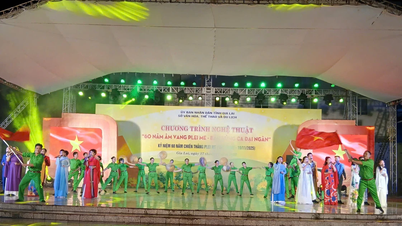









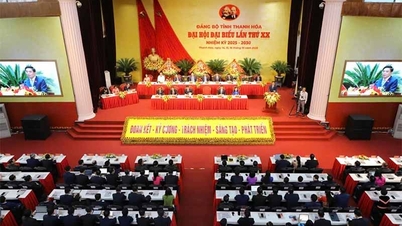




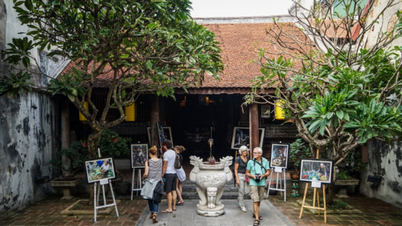























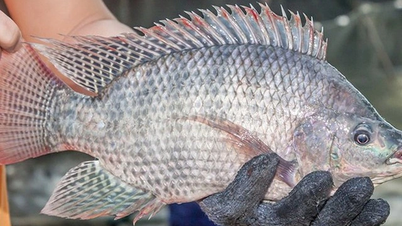











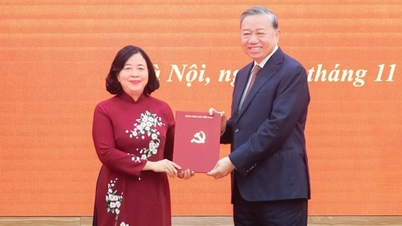


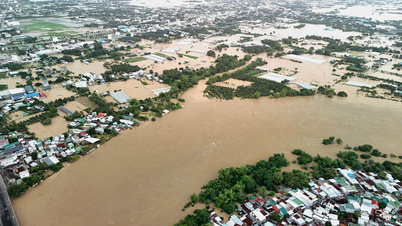
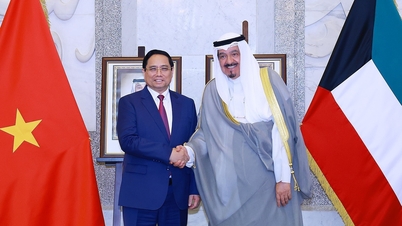


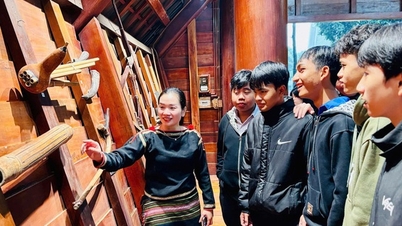


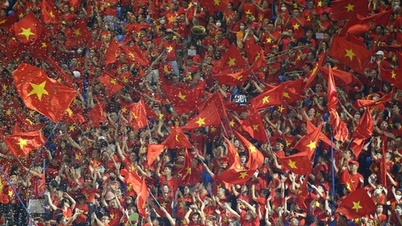










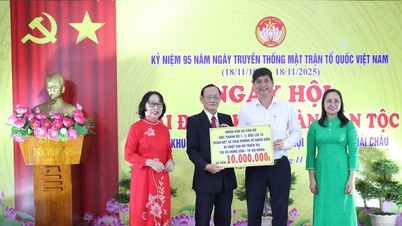















Comment (0)